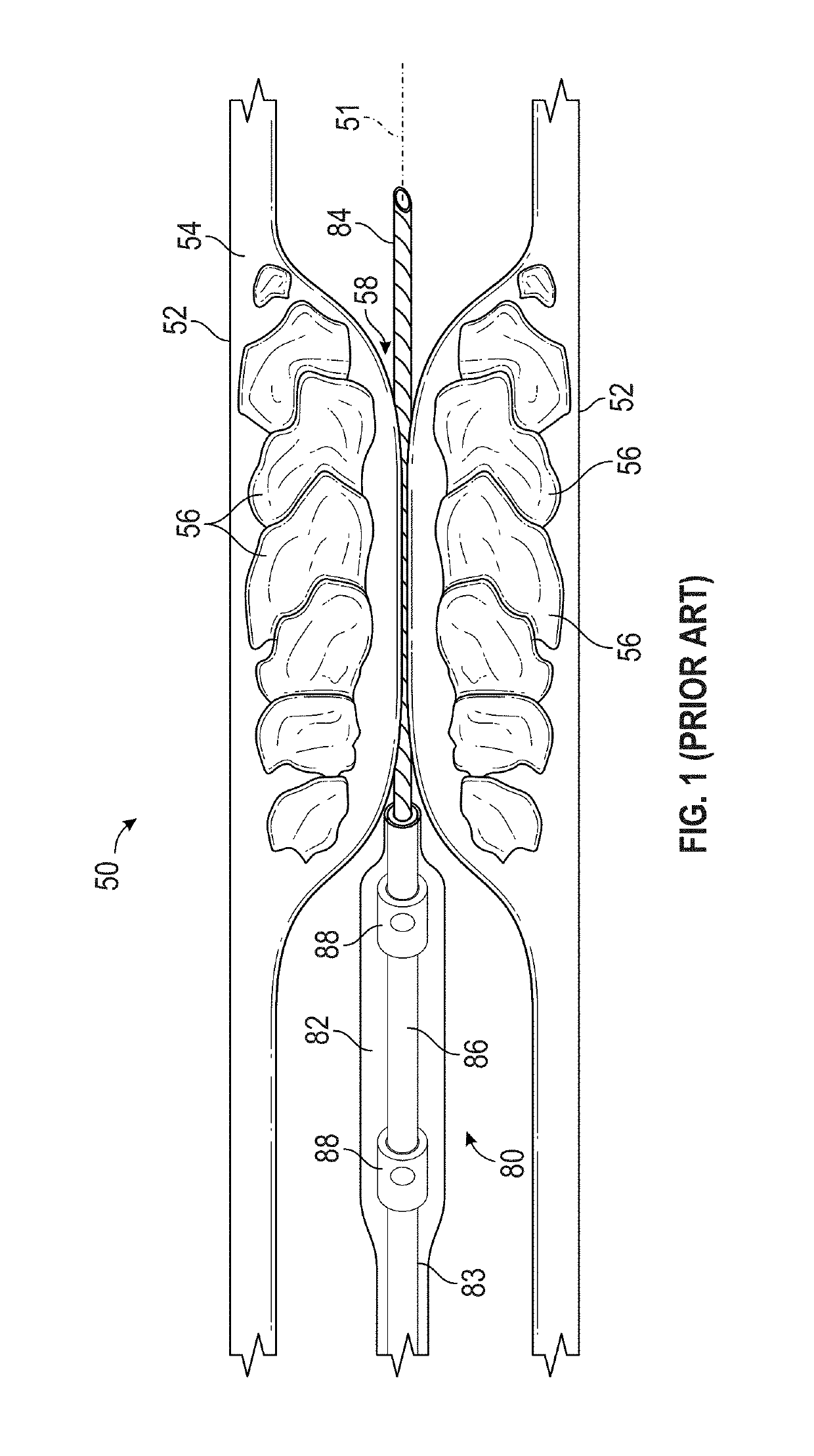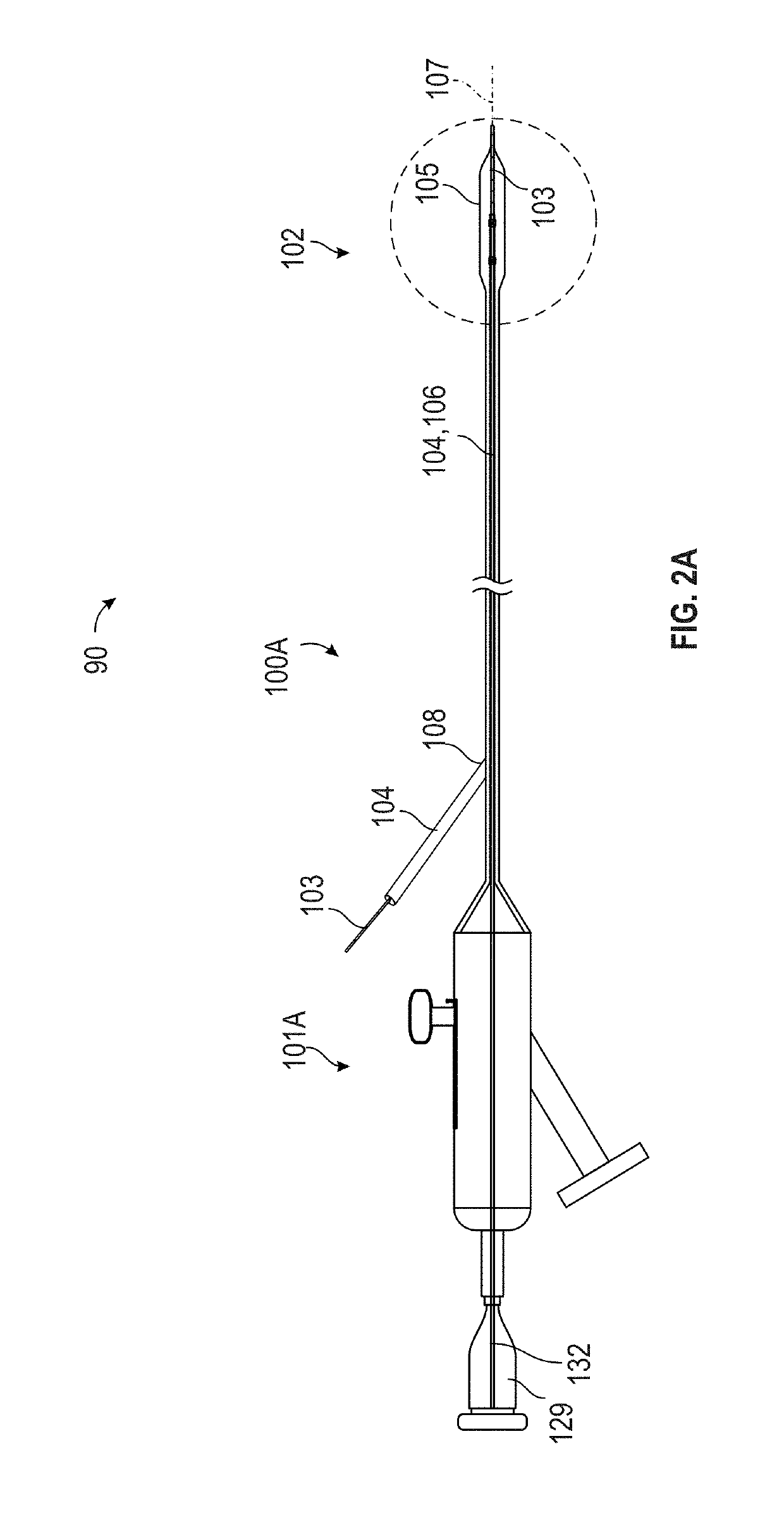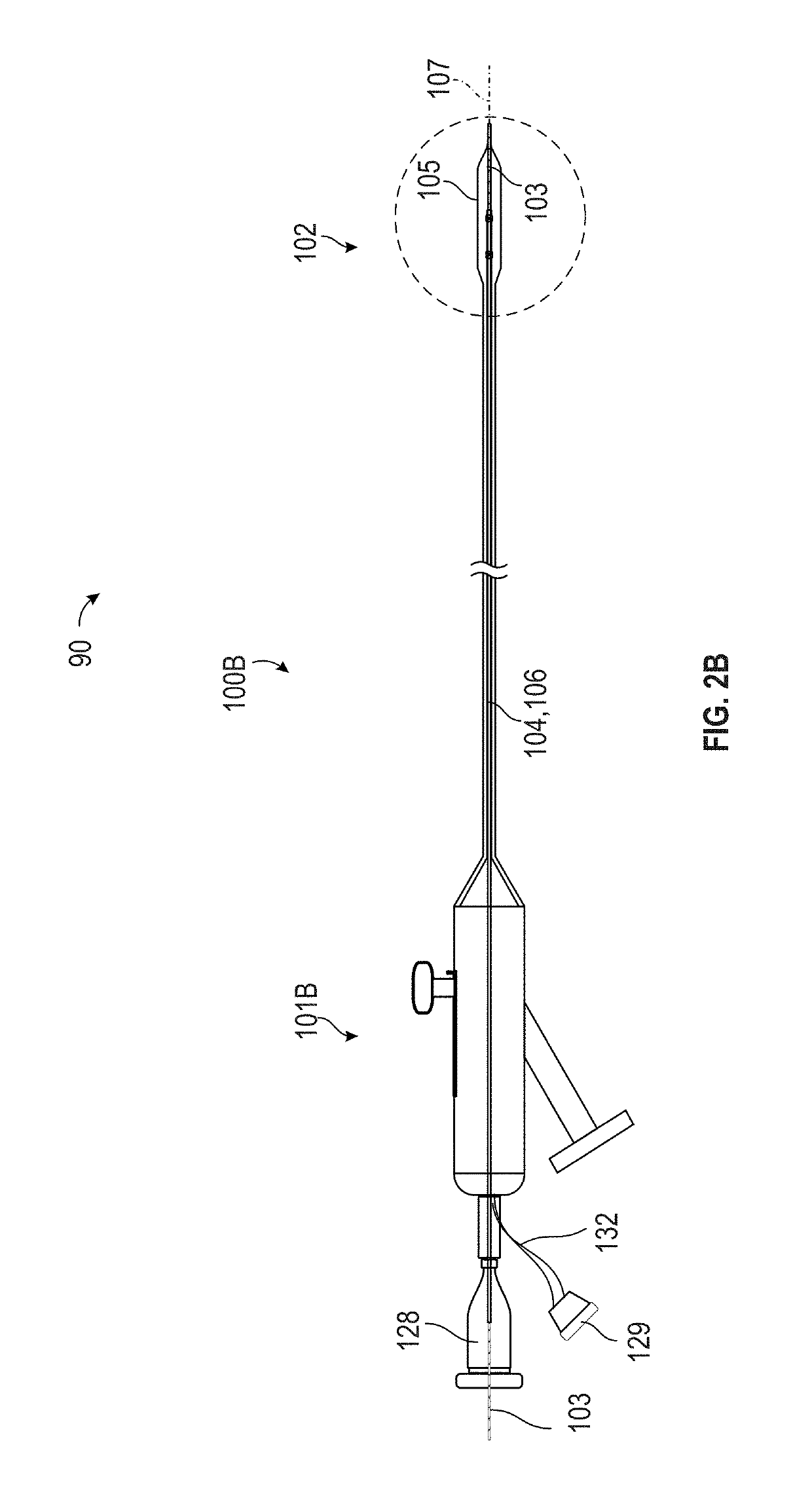Shock wave balloon catheter with insertable electrodes
a balloon catheter and electrode technology, applied in balloon catheters, medical science, surgery, etc., can solve the problem of not having a sufficient diameter to accommodate a lithoplasty® apparatus, and achieve the effect of complete dilation of the blood vessel and softening the calcified lesions
- Summary
- Abstract
- Description
- Claims
- Application Information
AI Technical Summary
Benefits of technology
Problems solved by technology
Method used
Image
Examples
first embodiment
[0030]FIG. 2A illustrates the translatable shock wave treatment apparatus 90, in which the guide wire 103 joins the catheter system 100A at a sealed entry port 108. The catheter system 100A is known in the art as a rapid exchange (Rx) system. The handle assembly 101A includes an electrical connector 129 that transmits electrical power to the emitter assembly 102 via wires 132. The handle assembly 101A is configured to translate the emitter assembly 102 with respect to the angioplasty balloon 105.
second embodiment
[0031]FIG. 2B illustrates the translatable shock wave treatment apparatus 90, in which the guide wire 103 extends all the way through the catheter system 100B, including the handle assembly 101B. The catheter system 100B is known in the art as an over-the-wire system. The handle assembly 101B includes a guide wire handle 128 that can be used to extend and retract the guide wire 103. The handle assembly 101B also includes an electrical connector 129 that transmits electrical power to the emitter assembly 102 via the wires 132. Either one of the rapid exchange system 100A or the over-the-wire system 100B can be equipped with the emitter assembly 102, the electrode carrier 106, and either handle assembly 101A, or 101B to permit translation of the emitter assembly 102 into and out of the angioplasty balloon 105.
[0032]FIGS. 3A and 3B show magnified views of the distal end of the translatable shock wave treatment apparatus 90, in which the guide wire lumen 104 supports the emitter assembl...
PUM
 Login to View More
Login to View More Abstract
Description
Claims
Application Information
 Login to View More
Login to View More - R&D
- Intellectual Property
- Life Sciences
- Materials
- Tech Scout
- Unparalleled Data Quality
- Higher Quality Content
- 60% Fewer Hallucinations
Browse by: Latest US Patents, China's latest patents, Technical Efficacy Thesaurus, Application Domain, Technology Topic, Popular Technical Reports.
© 2025 PatSnap. All rights reserved.Legal|Privacy policy|Modern Slavery Act Transparency Statement|Sitemap|About US| Contact US: help@patsnap.com



